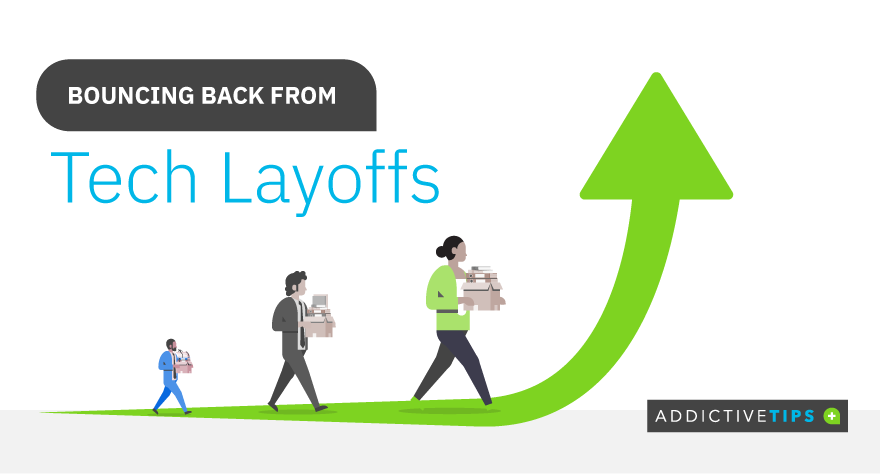How Fast Do Ex-Startup Employees Bounce Back? (Study)
Key Takeaways
- June 2022 saw the most tech startups experiencing layoffs (78) since April 2020 (194).
- U.S. tech startups in the finance industry experienced the most layoffs since 2020 (71), including companies like BlockFi (20%), Coinbase (18%), and Robinhood (9%).
- Nearly 40% of laid-off employees failed to update their employment status on their LinkedIn profile.
- Laid-off employees who worked as data analysts (70%), sales reps (65%), or data scientists (60%) had the fastest career bouncebacks.
- Over 1 in 5 tech recruiters and managers expect more layoffs at their company within the next six months.
With the U.S. economy contracting over 1% in the first quarter of 2022 and fears of a recession looming large, companies are cutting costs. The tech industry was hit particularly hard, cutting over 28,000 jobs this year as of July. To find out which tech sectors and companies were most affected, we studied data from Layoffs.fyi. We then gathered LinkedIn data of recently laid-off workers to see how they were or weren't bouncing back after losing their jobs. For full details about our data collection and analysis, please see our methodology at the end.
Keep reading to find out how tech workers are faring after layoffs and what hiring managers and recruiters are looking for in new candidates.
Hardest-Hit Tech Sectors and Companies
We haven't seen layoffs of this magnitude since the height of the COVID-19 pandemic. Let's look at which industry sectors were impacted most.
Layoffs among tech startup companies have been more prevalent in recent months than they've been since April 2020. Over 45% of those we studied have laid off one-third of their workforce or more since March 2020, and 78 reduced their workforce in June 2022 alone. While retail, education, and infrastructure had the highest percentage of laid-off employees overall, the finance industry had the highest number of companies experiencing layoffs.
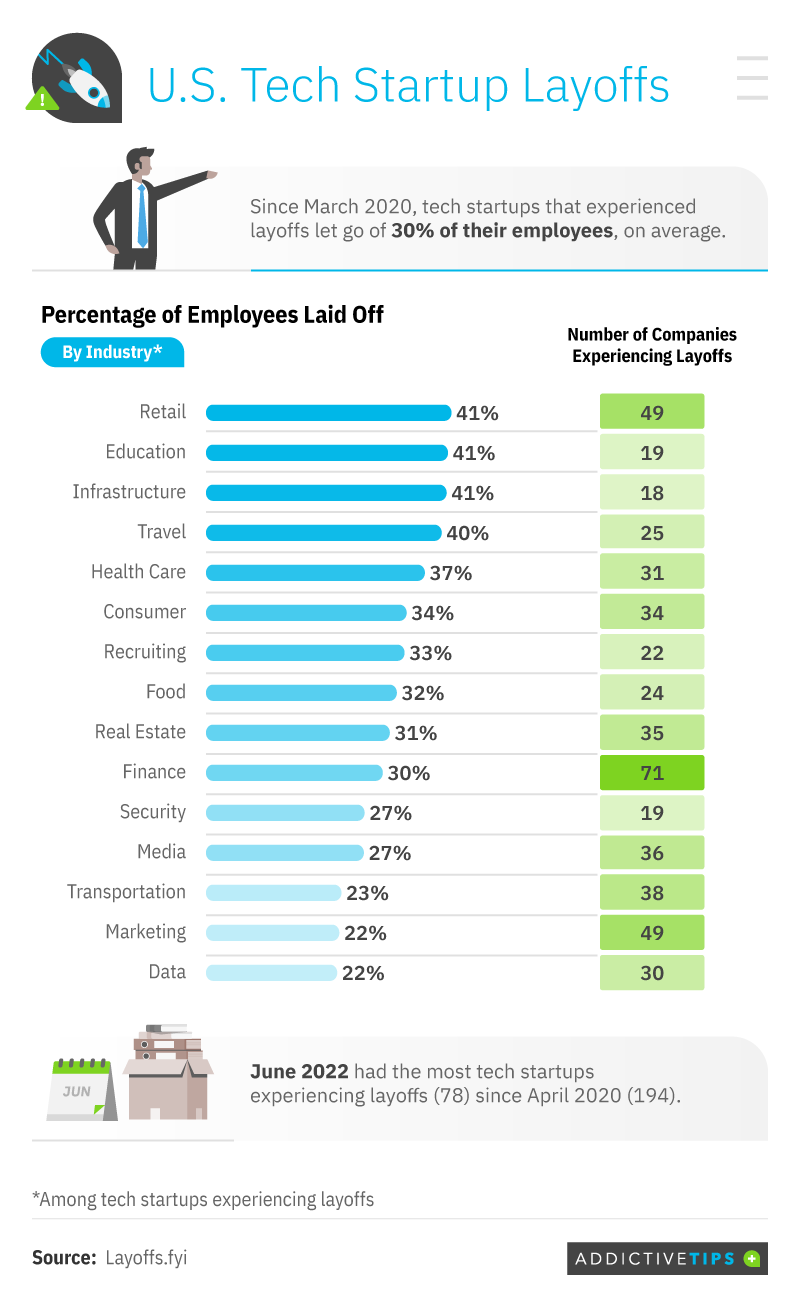
Taking company size into account, we noticed that smaller startups fared worse than larger ones. Companies that raised less than $50 million to start their business recently laid off almost 47% of their workforce. Larger companies with more startup capital were affected by layoffs but to a much lesser degree: $50-90 million (28%), $100-499 million (22%), over $500 million (19%). These findings suggest that smaller startups faced a more volatile situation.
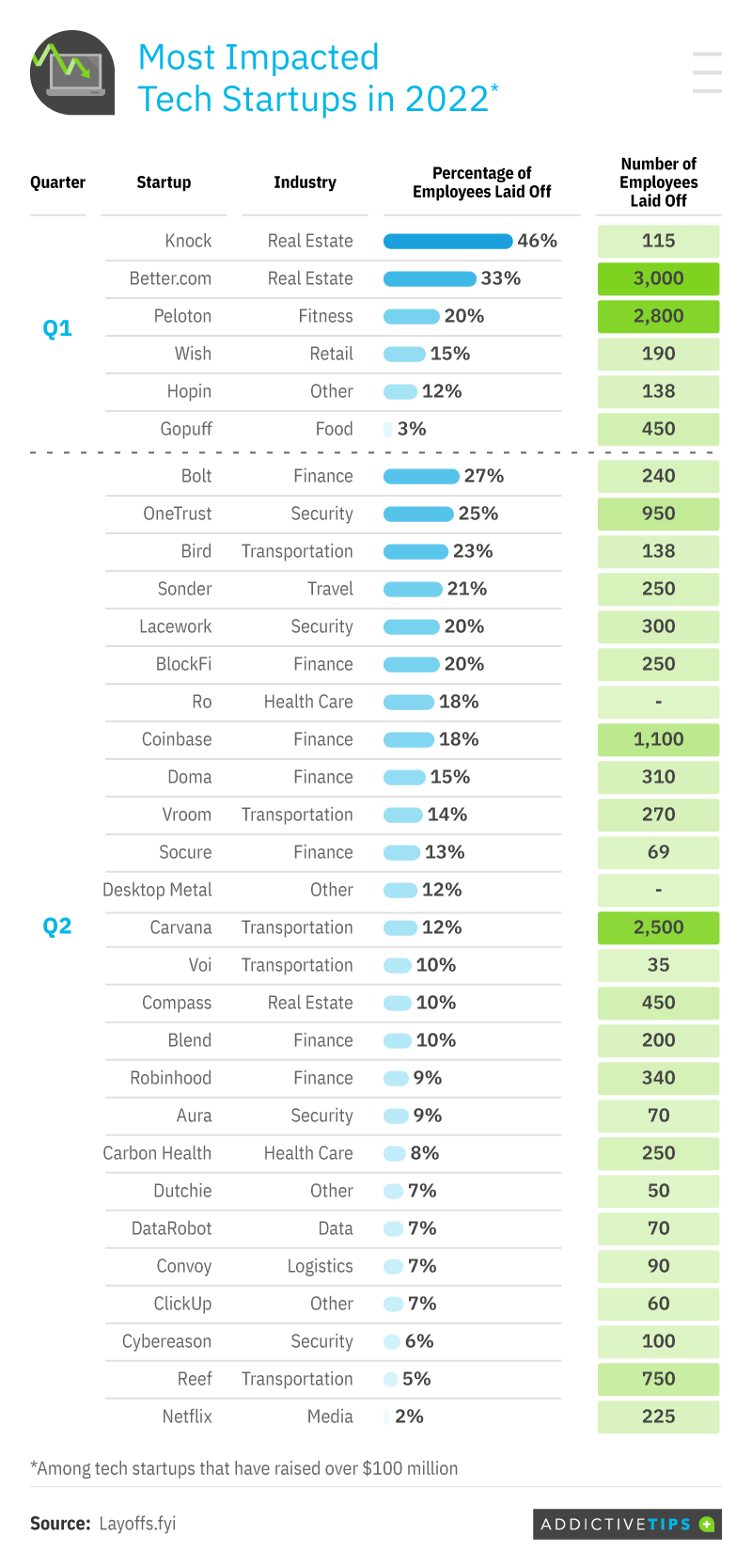
Why So Many Layoffs?
Financial startups like Coinbase, Robinhood, and BlockFi took quite a hit recently. These three companies deal with either stocks or cryptocurrency, both of which have seen a significant downturn in recent months due to fears of an impending economic recession. These downturns have greatly affected business for these companies and led to layoffs — a big surprise for companies that had done well in the past few years, despite a global pandemic.
Other companies like Netflix experienced large upticks in business due to the impact of pandemic restrictions. Analysts have speculated that some layoffs were due to overhiring to scale up company size during these booms, which may have been the case for Peloton; they experienced rapid growth while gyms were closed, but were then hit hard when they reopened after the pandemic lockdowns eased. Peloton laid off 2,800 employees in 2022, amounting to 20% of their workforce and the largest layoff in the fitness tech startup sector this year.
While these findings may spark concern, it's important to note that the current U.S. unemployment rate is 3.6% – the lowest it's been since February 2020. Despite tech companies facing the biggest downturn in 20 years, the vast majority of Americans are still employed and want to work. Some industry sectors have even added thousands of new jobs in the past month.
The Struggle to Recover Is Real
Despite a favorable labor market in the U.S., which added 372,000 new jobs in June, finding new work after a layoff isn't happening as quickly as one might imagine. More than half of those laid off since April have yet to find work.
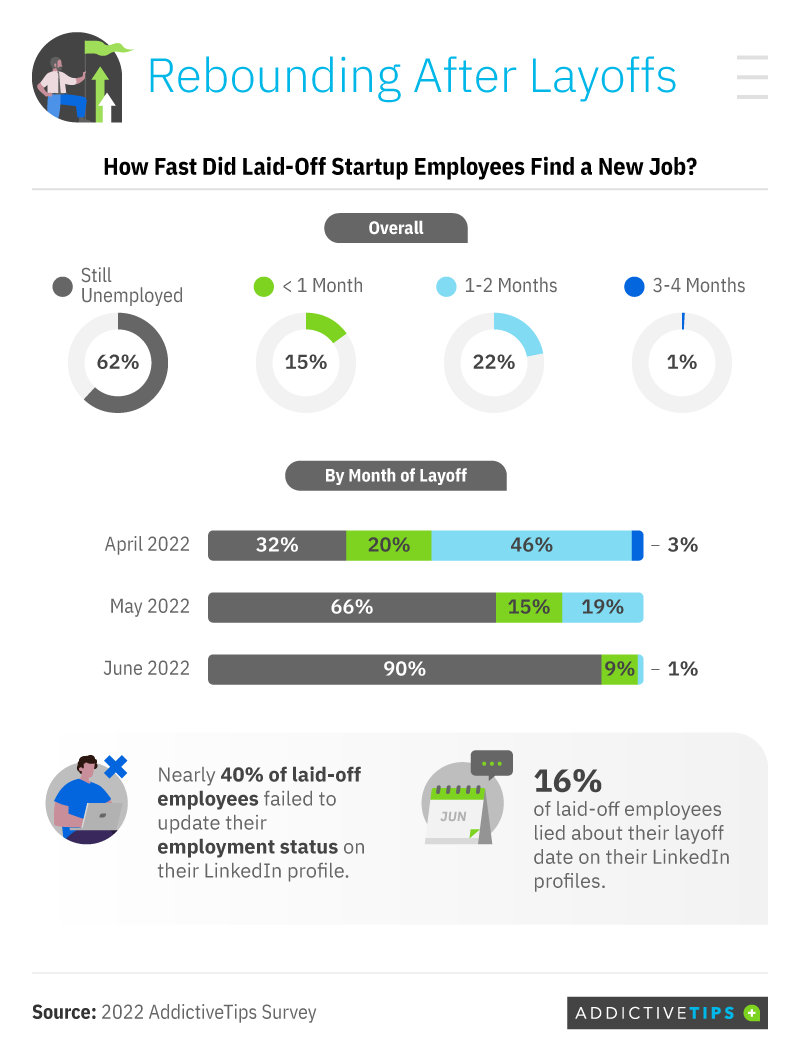
People weren't very eager to share their loss of employment on LinkedIn, especially while looking for new work – nearly 40% of them chose not to update their profile with that information. More than 16% even lied about the date on which they were laid off, possibly to close any large gaps in employment that hiring managers might notice on a resume.
In a past study, LinkedIn researchers suggest that people being less than truthful on their platform has more to do with maintaining their professional image than anything else. Younger Americans were the most protective of their work image. Millennials were twice as likely to lie about being fired on their profile, and 70% said they'd go out of their way to hide a layoff. Workplace experts interviewed for the study also thought that Millennials' tendency to project a curated image of themselves on social media has leaked into how they present themselves online professionally.
Pro Tip! Dishonesty isn't a great way to begin a working relationship; if a prospective employer raises questions about how your last job ended, just focus on the positive, like what you learned from the experience.
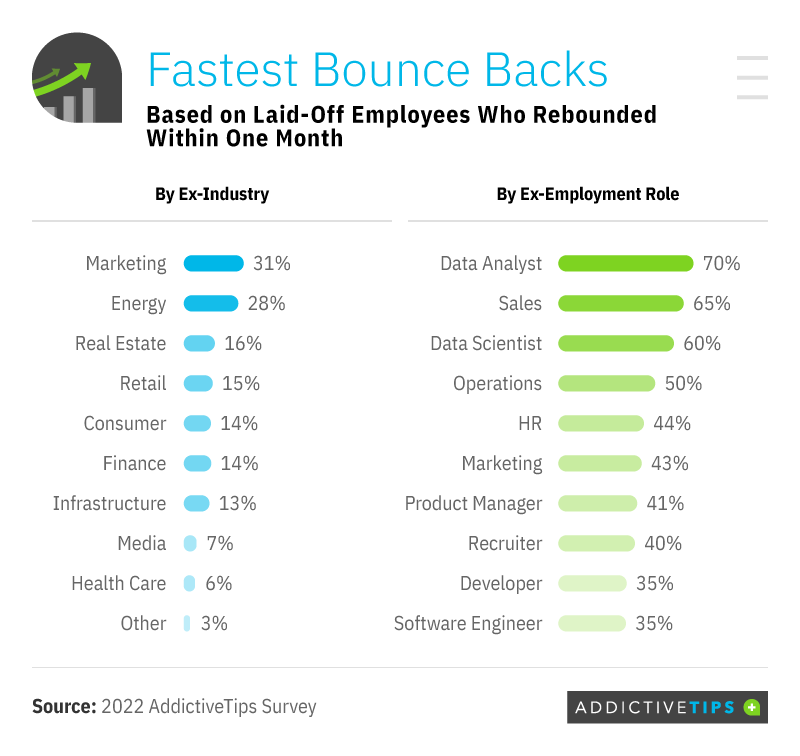
Finding a job within a month became less likely between April and June 2022. While 20% of those laid off in April found work within a month, that was only the case for 15% of those laid off in May. Only 10% of those laid off in June have found new work at all. Those within the marketing and energy sectors had the best chance of finding work within one month of being laid off. By role, salespeople, data analysts, and data scientists had the highest likelihood.
Bouncing back from a job loss can take a while, and the reasons are often complex. On top of the search for a new position (which can be grueling), the emotional toll of the loss can cause health issues that make it hard to feel motivated, like high stress, anxiety, and depression. The longer it takes to get back on your feet, the harder it can be to keep looking. If you find yourself in that difficult position, take care of yourself and stay positive; your next gig could be right around the corner.
Tips of the Trade
Recruiters and hiring managers are often tasked with laying employees off and seeking new ones. We asked them how they handle letting people go, what their strategies are for finding new candidates, and what qualities they look for in a new hire.
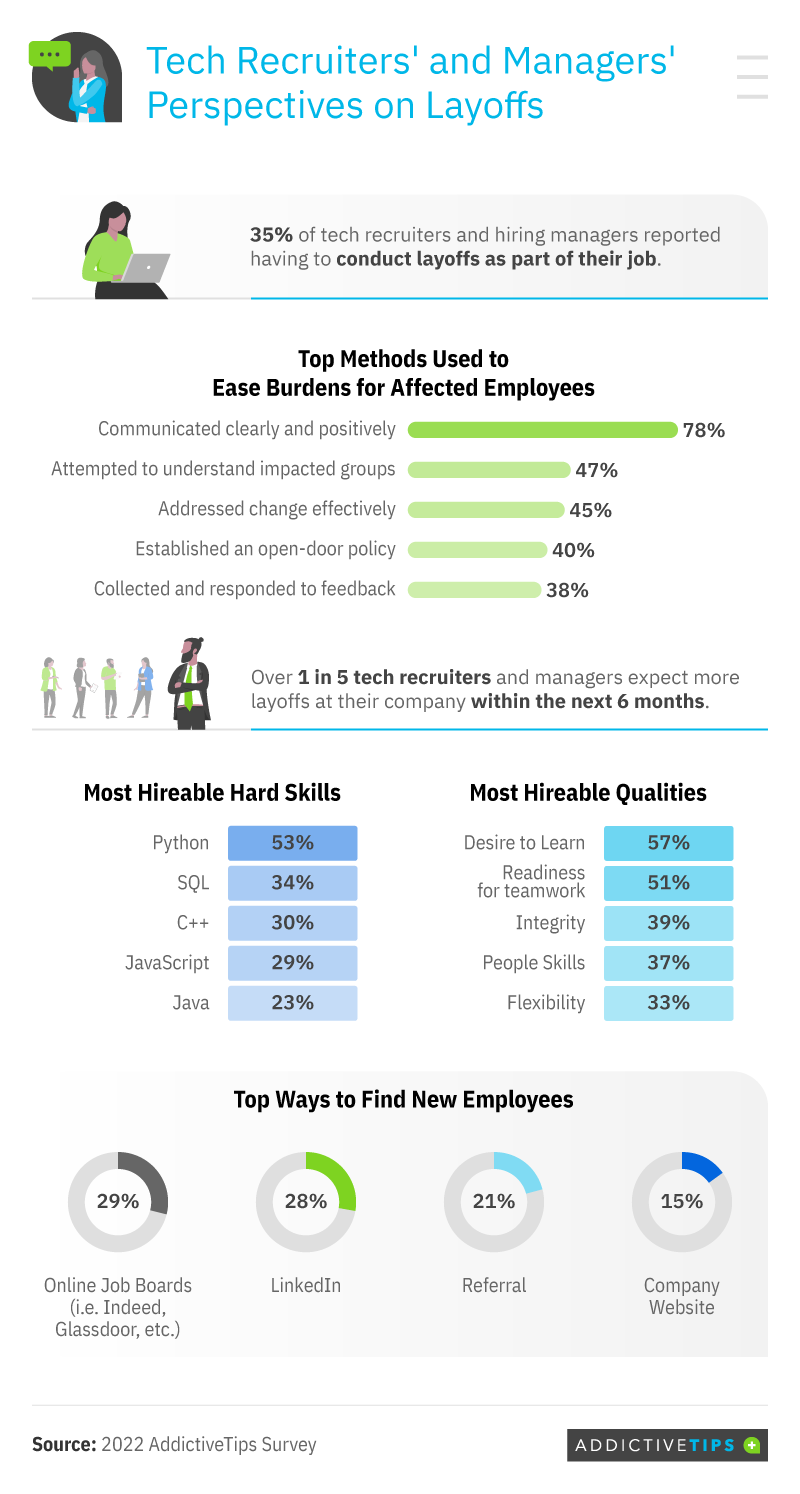
One in five recruiters and managers said they expect a workforce reduction in the next six months, leaving them with the impending task of breaking the news to employees. Over 75% of those surveyed felt communicating clearly and positively helped ease the burden on affected employees. Understanding the exact details of the layoff is crucial, whether it's severance amount, payment timing, length of continued benefits, or the complex contracts they must sign to receive them.
For those recovering from a layoff and looking for their next job, understanding what a tech recruiter or hiring manager is looking for (and where they're looking) can help. Online job boards like Glassdoor and Indeed were the most popular methods for finding job candidates, as reported by 29% of respondents. Another top resource was LinkedIn, whose social media platform format can help lend helpful context to a resume.
Those looking to fit in at a new tech company would do well to highlight their adaptability and eagerness to work with and learn from others – the top qualities hiring managers said they look for are a continuous desire to learn and a readiness for teamwork. It also might help to hone your Python expertise since more than half of respondents noted it as the most hireable skill.
Bouncing Back Successfully
As the tech startup world cut its workforce in recent months – especially in the finance, retail, and infrastructure industries – laid-off workers struggled to find new work quickly. It took many as long as three months to secure a new job (longer than most severance packages.) While those who lost jobs dealing with data and sales bounced back the fastest, we discovered helpful resume and interview tips for anyone looking to work for a tech startup: highlighting an eagerness to learn and an ability to work well with others can help candidates stand out. And perhaps a Python course while looking for a new job couldn't hurt.
Methodology
For this study, we leveraged data from Layoffs.fyi in order to analyze tech startup layoffs in the U.S. from March 2020 to June 2021. In particular, we focused on the total number of startups conducting layoffs in each industry and the number/percentage of employees that were laid off. Where possible, we gathered information on the particular employees that were laid off and looked into their LinkedIn profiles to see how fast they bounced back to work. In total, our data was based on 586 tech startups and 917 specific employees that were laid off. No statistical testing was performed on this data, so the above claims are based on means alone.For this study, we also surveyed 344 tech professionals with hiring capabilities.
About AddictiveTips
AddictiveTips is the best resource for all of your technology-related questions. They're the tech-savvy friend you always needed right at your fingertips, with easy-to-understand solutions to all kinds of technology problems, no matter how simple or complex.
Fair Use Statement
If you enjoyed our study on tech startup layoffs and how workers have managed to bounce back, feel free to share this study for non-commercial use. Just be sure to link back to the original page so our research team receives credit for their work.
